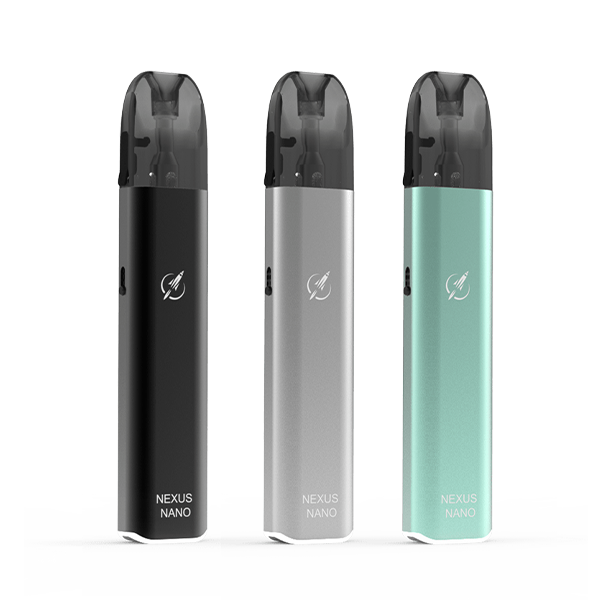[vc_row][vc_column][vc_column_text]
In the past decade, vaping has grown significantly as an alternative option to smoking traditional cigarettes. Much of this is done in the mindset that vaping, or smoking electronic cigarettes, is safer. For this reason, vaping has become popular not only with people who wish to quit smoking traditionally, but also with a younger generation that previously had no interest in smoking cigarettes. Vaping also has the bonus that it does not produce the same stigmatized odor as cigarettes, and it comes in a range of additional flavors that appeal to a much wider audience.
There is still plenty of research to be done on vaping and medical professionals are quick to admit that there is much they do not know about vaping products or their chemical makeup. Normal tobacco cigarettes have had roughly 7,000 different chemicals identified within them, most of which are toxic. E-cigarettes on the other hand, remain much of a mystery as to what compounds they contain. As a result, users today are growing dependent on e-cigarettes without knowing all the information about what they are putting into their bodies and the health risks associated with it. Yet, despite this, the myth remains that e-cigarettes are safe, although research has been steadily showing the opposite to be true.
Before you pick up your next e-cigarette, here are 10 points that you should know about the product and the industry.
1. E-Cigarettes Contain Nicotine
One of the most common misconceptions surrounding vaping is that e-cigarettes are not real cigarettes and therefore do not contain harmful nicotine, a substance known to cause countless health conditions, one of the most common of which is cancer. This is false; e-cigarettes do contain nicotine and are even labeled as a nicotine product on their package in stores and in commercials. They are frequently advertised as having less nicotine than a traditional cigarette but depending on how a person uses their e-cigarette, it is possible for them to adjust the dose so the amount of nicotine per puff is higher than a regular cigarette.
While there are some e-cigarettes that do not have nicotine, most products do contain it. Furthermore, these exceptions are frequently modified devices or black-market e-liquids that use other chemicals instead, such as tetrahydrocannabinol (THC), the most recognizable component in marijuana. This is especially dangerous because the liquids typically have a higher concentration of THC than users would receive from simply smoking marijuana on its own.
2. Vapes Contain Other Harmful Chemicals
While not every chemical within e-cigarettes has been identified, studies done on vaping products have already identified several worrisome chemicals. One of these that particularly stands out is formaldehyde, which is best known for its presence in household products including laundry and dish detergents, soap and body wash, and manufactured wood furniture. It is also frequently a component of glues and adhesives.
People are naturally exposed to small amounts of formaldehyde in the air, but in higher doses the American Cancer Society has reported a link to several different types of cancer, primarily leukemia. This research is supported by studies carried out by government organizations such as the National Toxicology Program, the International Agency for Research on Cancer, and the Environmental Protection Agency, who all classify it as a human carcinogen. Further studies on vaping products suggest that when used, they produce enough formaldehyde to meet the danger levels given by these organizations.
3. E-cigarettes are not Safe Just Because They are a Water Vapor
Another misconception about e-cigarettes is that because they produce a water vapor rather than smoke, the dangerous chemicals within them are neutralized. This has no truth to it, for even as a water vapor the chemicals within vaping products remain hazardous to a person’s health. In some cases, the risk is greater than smoking due to the strength certain chemical concentrations have within water vapor. How a person adjusts the settings on their device plays a major role in this, for higher settings unsurprisingly release stronger concentrations.
4. Young Adults are More Likely to Vape
There has been a steady decline in traditional cigarette use among teens, but in its place, vaping has found a new home. According to a Gallup poll conducted in 2018, 20% of Americans in the 18-29 age range reported regular vaping. The next highest category was the 30-64 range where only 8% said they vaped. In contrast, the study found that only 16% of the 18-29 group regularly used traditional cigarettes. This demographic variation is likely due to misconceptions among young adults regarding the safety of vaping, as well as its wide assortment of flavors from chocolate to watermelon, which as we know are more appealing to younger crowds.
Regardless of the cause, this information shows that it is our young people that are at greatest risk.
5. Vaping is Addictive
Since vaping is sometimes advertised as a means to help people quit traditional cigarettes and break their addiction, there is a false understanding that vaping itself is not addictive. In reality, vaping is very much addictive, with evidence showing the possibility that it is more addictive than cigarettes.
6. Vaping Could be a Gateway Drug
While many adults start out using traditional cigarettes and then turn to vaping, young adults are starting out with vaping first. E–cigarettes are sometimes used to help a person break their addiction to cigarettes, however there are now fears that e-cigarettes may become a gateway drug to kickstart the next smoking epidemic for young adults. This point is stressed by Dr. Michael Blaha, a Johns Hopkins professor that directs clinical research at the Ciccarone Center for the Prevention of Cardiovascular Disease. He reports that some studies have found a link showing young people who vape are more likely to begin smoking cigarettes. Additionally, these individuals also have a higher chance of turning toward illicit drugs like marijuana and cocaine.
7. Vaping Causes Heart and Lung Issues
In 2019, research through multiple studies by Johns Hopkins Medicine reported a link between e-cigarettes and increased odds for developing asthma and chronic obstructive pulmonary disease. The chances are further amplified by people who use both e-cigarettes and traditional cigarettes, with the risk rising to around six times what it would be for a person who uses neither. This matches previous research that nicotine causes heart and lung issues in frequent cigarette users.
8. E-cigarettes are not Effective for Quitting Smoking
Despite the statement’s prominence in vaping advertisements and public understanding, e-cigarettes are not an effective tool to quit smoking. Rather, many smokers will likely end up swapping one addiction for the other, if not simply keeping both. For this reason, the Food and Drug Administration has refused to approve e-cigarettes as a smoking cessation device. The CDC also advises adults who want to quit smoking to only attempt e-cigarettes as a last resort after all other attempts and products have failed.
9. Vaping can have Fatal Outcomes
E-cigarettes are dangerous enough that as of January 21, 2020, the CDC had confirmed that vaping was associated with 60 deaths in the United States. The reason for these deaths were as a result of vaping related lung injuries.
An important point to keep in mind here is that the CDC and other government organizations have only recently begun to monitor the effects of e-cigarettes. As a result, there are certainly more deaths that have been attributed to other causes when vaping was a key factor.
10. Drug Addiction can be Perpetuated Through Vaping
Not only are vapes used to inhale nicotine, but virtually any substance that can be dissolved in water can be consumed through vaping systems. This includes marijuana, cocaine, opioids, psychedelics, and amphetamines. A convenient delivery system for the addicted person, vaping illicit substances leaves behind no evidence; no telltale signs; becoming the perfect disguise for drug use. Nevertheless, this could be catastrophic, especially to the unsuspecting person, as e-cigarettes deliver the drug much faster to the brain and in higher concentrations, increasing the potential for relapse (for those in recovery), overdose, and death.
Regardless of a person’s age and background, vaping presents a serious risk to their health, much like drugs and alcohol. Before a person begins to vape, they should always understand the risks associated with the product and not be fooled by the misconceptions.[/vc_column_text][/vc_column][/vc_row]

















